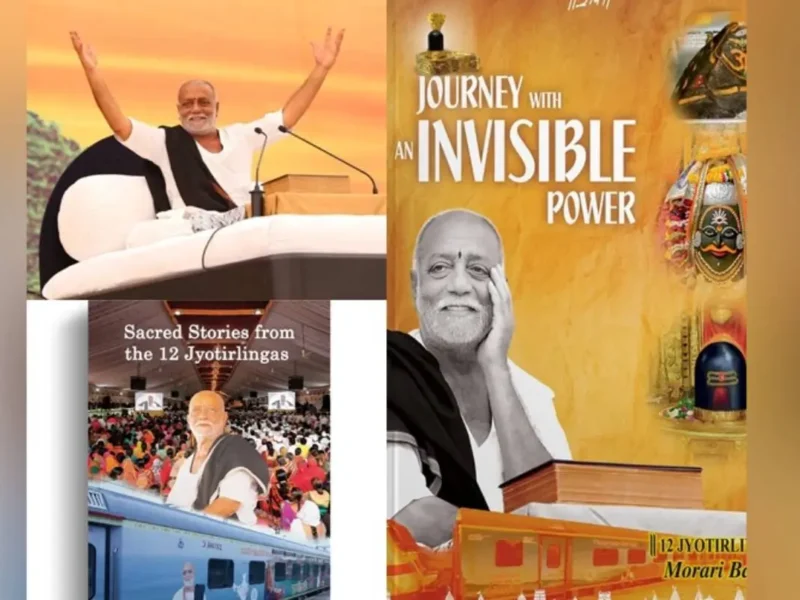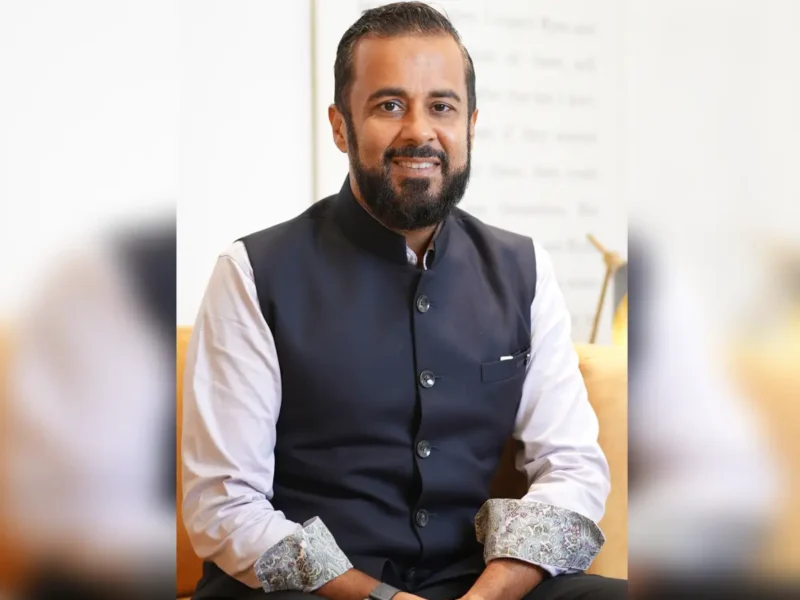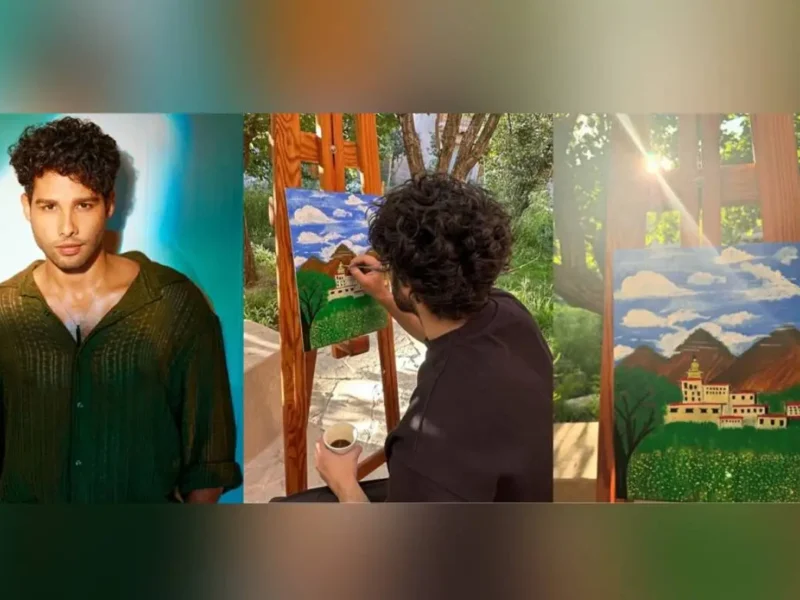
‘History Must be Rewritten In The Light of Truth’
NEW DELHI, (IANS) – India is rising again today at the forefront of a new global spiritual civilization with a cosmic vision, says an extensively researched book that provides a fresh perspective on how Indian civilization was impacted by the forces of the West.
Kanchan Banerjee’s “The Crash of a Civilization” (Prabhat Prakashan) critically views how the profound and long-term influence of foreign ideologies and forces such as Christian, Islamic, and later colonists, western, and Marxists have impacted India, society, and people.
He provides a telling insight into the crash of one of the world’s oldest civilizations and brings the historical view that explains both why the Indic civilization has been denigrated and why it is rising again today.
“Indic civilization is founded on the ideals of the Rishis of the past. This is also called a Vedic civilization, a Yogic civilization that is the most open and plural in history. But in many ways, the Abrahamic ideas and ideals are the antithesis of the Rishi civilization. For example, present-day Christianity propagates that we all are sinners due to the ‘original sin’ of Adam and Eve, and for redemption, Christ was born, and we must follow him as the son of God,” Banerjee says.
“On the other hand, the Upanishads say that we are ‘Amritasya putrah’ – children of immortals, not sinners. Islamic Azan is a call to Namaz clearly stating that ‘Allah is the only god and all others are false’. Whereas the Rishi civilization says, ‘Ekam sat viprah vahudha vadanti’ – the truth is one but can be realized via different paths.
“Abrahamic religions believe in exclusivity, whereas the Bharatiya civilization’s hallmark is in inclusiveness. It says ‘Vasudhaiva kutumbakam’ – the entire world is one large family.
Speaking about the research that went into the book, he said from childhood, had read about certain events in Indian history which did not make much sense. For example, Sher Shah built the Grand Trunk Road in five years. But it is a pure myth we know today. He also read that India was ‘the Golden Bird’; everybody wanted to come to India for wealth, be it Vasco Da Gama, Columbus, or Amerigo Vespucci. According to British economist Angus Maddison, India had the lion’s share in world GDP for many centuries.
“After I came to America and saw the prosperity here and wondered what happened to the ‘golden bird’ and what caused its downfall, that triggered me to explore what are the events that shaped the eventual fate of India as we see it today. For that, obviously, I had to investigate the outside forces who were the cause of this downfall,” Banerjee explains.
Not being a historian, he started to do his own research. He was enrolled in several online libraries globally. He sat at Harvard University and other libraries and purchased several books.
“My only goal was to find out the truth about India. The book is the result of several years of research, especially the two years Covid pandemic period,” Banerjee said.
There is a growing conversation around how India had warriors who resisted onslaughts and raids but over thousands of years it continued to lose its parts bit by bit. How and why is its awakening to the lost history important now?
“At some point in history, India had great knowledge and trade relations with the Arabs. An example is Baghdad during the rule of Caliph Haroon Rashid (around 800 CE). This was the golden period of Islamic history when knowledge, culture, and arts peaked until the Mongol hordes and children of Cengiz Khan arrived. The Arabs learned Indian mathematics, astronomy, medicine, and many other subjects from Indian teachers,” Banerjee said.
“The next phase of Islamic history is very bloody. Most countries in Africa, the Middle East, and some parts of Europe fell to the Jihadi missions of different Caliphs.
“It took much longer for these Mongol-Turko-Islaimist forces to penetrate the borders of India, at that time, first, Afghanistan. Kabul and Zabul fell in between in the 8th century. It was around 900 CE when Sindh fell. Afghanistan, then by Mahmud Ghazni around 1000 CE. It was a peaceful Hindu-Buddhsit-Zoroastrian state. Due to a lack of military power, it easily fell under invasions.
“But when the forces came near Sindh, Raja Dahir gave huge resistance against the forces of Bin Kasim. But due to destiny, a snowstorm changed the history of this region. The Hindu Shahi dynasty ruled over the Kabul Valley (Northeastern Afghanistan), Gandhara (Kandahar), and present-day Northwestern India between 850 CE and 1026 CE. Maharaja Jayapaladeva was the ruler of the Hindu Shahi dynasty from 964 CE to 1001 CE. Both kings defended the land heroically against the invasions of the Ghaznavids.
“Mahmud led 17 expeditions into India. The first one was in 1001 CE, and the last one in 1027 CE. He had two motives — plundering the riches, especially temples and palaces of the land, and terrorizing and converting the local populations into Islam. His tactics were ‘surprise shock attack’ and ‘hit and run’. The peaceful kingdoms were unprepared for such out-of-the-blue attacks. However, they gave heroic resistance and often defeated the encroaching enemy. Muslim and Marxist historians would call his attacks’ battles’ and ‘wars’ — but many of his attacks were just sudden raids like an organized band of robbers and pirates,” Banerjee explained.
Due to Mahmud’s attacks, India’s western front, especially Afghanistan and Punjab, was overrun with much destruction and bloodshed. Similarly, Khilji destroyed many of India’s great centers of learning and innovation, such as Nalanda, the author said.
“We often read in our history books that the invaders defeated Indians. It is a blatant lie. The invaders had a really hard time in India. From Afghanistan to Assam, Kashmir to Karnataka, they mostly faced defeats and retreats everywhere due to the Indian heroes. Colonist-Mazist-Islamist historians covered up much of it. Only now, slowly, we are finding out about the real heroes of India, not just Shivaji, Rana Pratap, and Guru Gobind Singh, but many other great kings across India. On the western front, we had the Sahi Kingdom, and Raja Dahir and Jayapala made great sacrifices to protect the land.
“In Gujarat, Chalukya Solanki Rajputs and Queen Naik Devi protected Gujarat during the attacks of Ghori. In Kashmir, Kings Lalitaditya Muktapida and Sangramraja defended the foreign forces many times. In Assam, Ahom Kings, including Raja Prithvi, Viswa Sharma, and Lachhit Borpukhan, defeated the Mughal attacks 17 times and never surrendered,” Banerjee pointed out.
Also, the Nayaka Kings of Telengana drove off the Tuaghlaqs. Rani Kranavati of Garhwal defeated the Mughals and cut the noses of the captured Mughal soldiers. And even in Bengal, Rani Bhavashankari defeated the Mughal/Pathan forces at least three times.
“And also, it is not true that Hindu kings lacked unity. There were innumerable historical instances of great alliances of kings and kingdoms to defeat foreign enemies from the time of the Sakas, Huns, Turks, Arabs, and Mughals,” Banerjee says.
As Will Durant warned “civilization is a precarious thing, whose delicate complex of order and liberty, culture and peace may at any time be overthrown by barbarians invading from without or multiplying within,” the author says.
“So, the truth must be researched and told to our new generation. History books must be rewritten considering the truth of our history. After all, India’s motto is ‘Satyameva Jayate’ – Truth Alone Triumphs,” Banerjee concluded.




